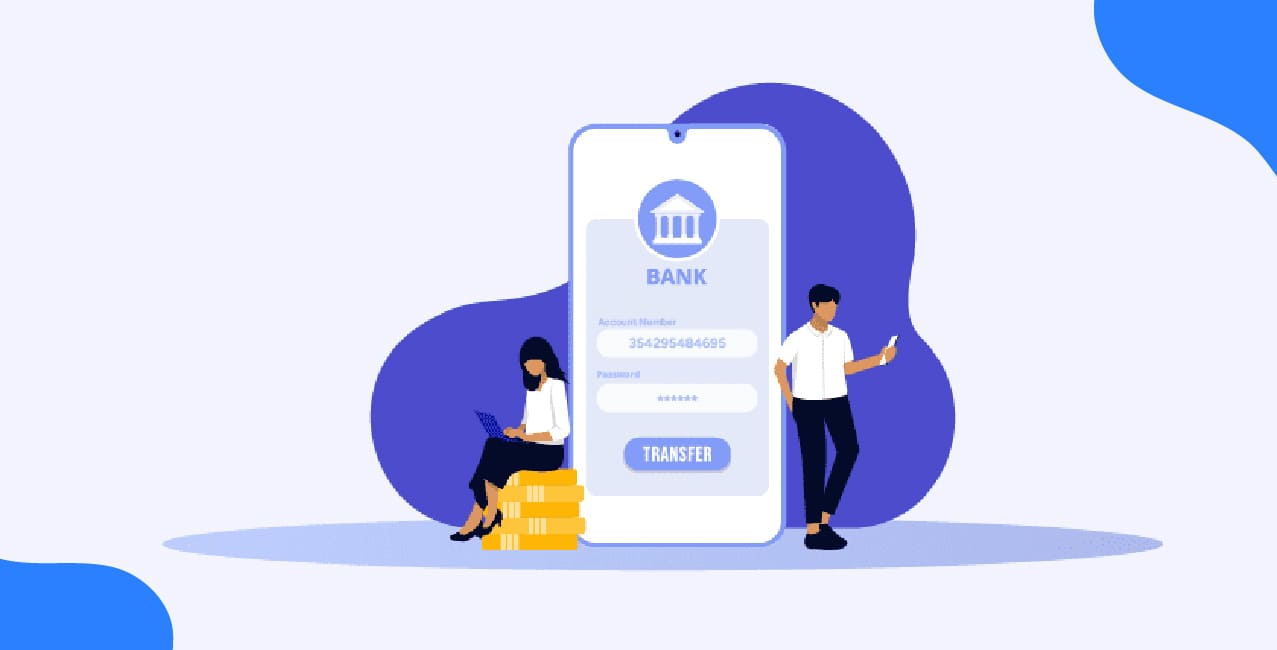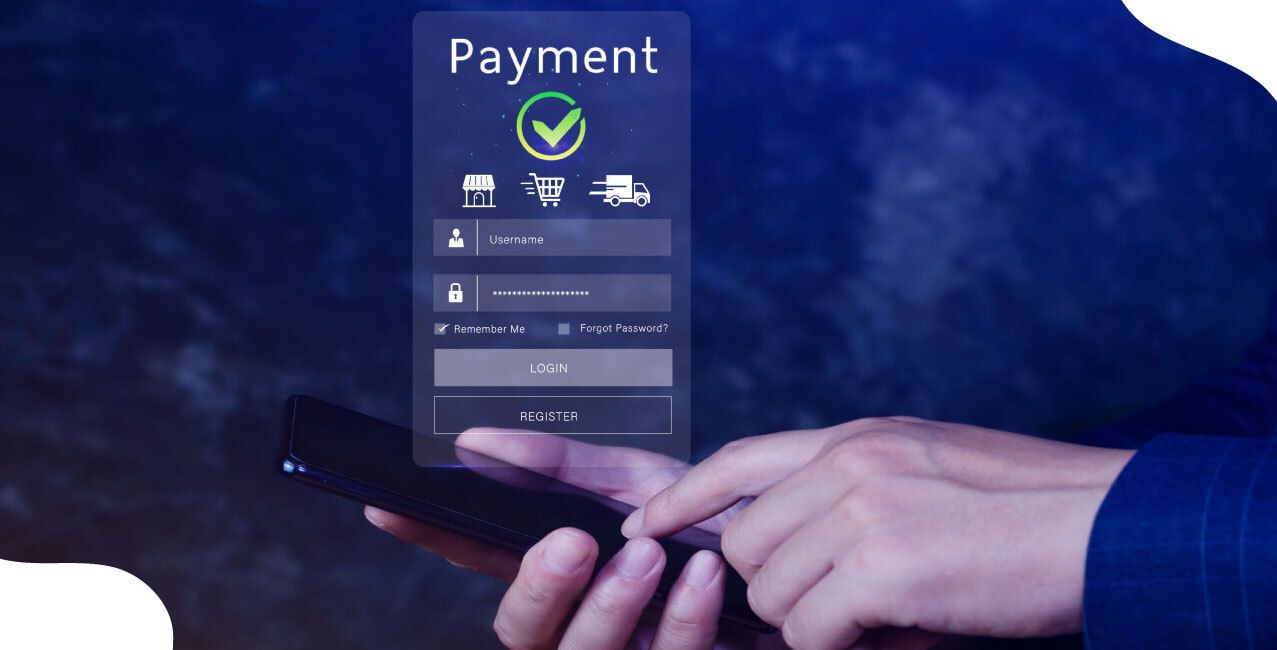
Author
LoansJagat Team
Read Time
10 Min
01 May 2025
Overdraft vs. Personal Loan – Find Out Which Is Cheaper
My sister has stopped taking me shopping, and honestly, I can’t blame her. Whenever we walk into a Nykaa store, I want every lipstick in nudes, corals, browns, and everything else. I get so confused that I take ages to decide, and the whole shopping trip becomes super stressful.
One time she even said, ‘Tumhare saath shopping karna mental torture hai.’ Brutal, right?
But let’s be honest: when there are too many choices, anyone can get confused. It’s not just about lipsticks. We do the same thing with money. These days, there are so many loan options: personal loans, credit card loans, overdraft loans, NBFCs, and even government schemes.
If we don’t understand them correctly, we might pick the wrong one and end up paying more.
For Example, Nikhar works as an SEO executive. When he needed ₹5 lakh for a medical emergency, he panicked and took a personal loan at 14% interest. He did not check other options. To his surprise, he later discovered that his bank offered an overdraft facility at an interest rate of 11%.
If he had used that, he would have paid interest only on the amount he used and only for the days he needed it. However, with the personal loan, he had to pay interest on the entire amount for the entire term. That small decision cost him nearly ₹15,000 extra.
Let’s see what could have happened had he taken an overdraft loan.
Feature | Personal Loan | Overdraft Facility |
Loan Amount | ₹5,00,000 | ₹5,00,000 |
Interest Rate | 14% p.a. | 11% p.a. |
Loan Tenure | 12 months | Used for 4 months only |
Monthly EMI | ₹44,000 (approx) | Flexible repayment |
Total Interest Paid | ₹32,000 (approx) | ₹17,800 (approx) |
Prepayment Charges | ₹2,000 (approx) | None |
Total Cost | ₹34,000 | ₹17,800 |
Can Reuse Limit? | No | Yes (Revolving facility) |
Nikhar could’ve saved ₹15,000 just by asking one more question at the bank. Before borrowing money, pause and ask around. Compare your options. Whether it's shopping or taking a loan, the right choice with the proper knowledge can save you a lot, whether it's in lipstick or lakhs.
Read More – Differences Between A Personal Loan & An Overdraft Loan
Let's start by comparing the 2 widely known loan options, overdraft and personal loan. So that in situations like Nikahr’s, you make the right decision.
What is an Overdraft Loan?
An overdraft loan is a short-term borrowing facility that is directly linked to your savings or salary account. It allows account holders to withdraw more money than what is currently available in their account, up to a specific pre-approved limit set by the bank.
This facility is beneficial during times of urgent cash needs, such as medical bills, client payment delays, or temporary business
expenses.
Unlike traditional loans, interest is not charged on the full sanctioned limit. Instead, interest is calculated only on the amount withdrawn and for the duration it is used. This makes overdrafts highly flexible and cost-effective for short-term use.
As of January 2025, the Reserve Bank of India (RBI) has imposed a cap on unsecured overdraft tenures, requiring them to be repaid or renewed within 90 days. This rule aims to prevent borrowers from falling into long-term debt cycles.
Overdraft Loan Interest Rates, Eligibility, And Features
These interest rates vary across banks and depend on the customer’s relationship with the bank and their creditworthiness. Secured overdrafts typically carry lower interest since the bank holds collateral, such as a fixed deposit.
Type of Overdraft Loan | Interest Rate (Per Annum) | Security Requirement | Suitable For | Repayment Terms | Notes on Usage and Regulation |
Secured Overdraft | 12% to 18% | Yes (e.g., fixed deposit pledge) | Salaried individuals with savings | No fixed end date; interest-only repayment allowed | Interest is paid monthly; principal can be repaid anytime |
Unsecured Overdraft | 18% to 24% | No security required | Freelancers, gig workers, business owners | 90-day repayment or renewal mandated by RBI | Higher interest; ideal for short-term liquidity issues |
For Example, Priya, a 32-year-old freelance designer, faced a short-term cash crunch when a key client delayed payment. To bridge the gap, she activated a ₹2 lakh overdraft facility with her bank. She only needed ₹50,000, which she used for 15 days. Her bank charged her an annual interest rate of 14% on the borrowed amount.
The bank calculated her interest using the formula:
₹50,000 × 14% × (15 ÷ 365) = ₹287
This means Priya paid just ₹287 in interest, which is significantly lower than what she would have paid for a short-term personal loan for the same amount.
Total OD Limit Approved | Interest Rate (Per Annum) | Amount Withdrawn | Duration of Use | Interest Calculation Formula | Total Interest Payable |
₹2,00,000 | 14% | ₹50,000 | 15 days | ₹50,000 × 14% × (15 ÷ 365) = ₹287 | ₹287 |
₹5,00,000 | 18% | ₹1,00,000 | 30 days | ₹1,00,000 × 18% × (30 ÷ 365) = ₹1,479 | ₹1,479 |
₹3,00,000 | 22% | ₹75,000 | 20 days | ₹75,000 × 22% × (20 ÷ 365) = ₹904 | ₹904 |
These examples demonstrate how interest costs remain low when the borrowed amount is small and used for only a short period. Since overdraft loans charge interest only on the utilised portion and not the full approved limit, they are ideal for managing temporary cash flow issues without committing to long-term debt.
What is a Personal Loan?
A personal loan is a lump-sum borrowing option that provides immediate funds for planned expenses such as weddings, home renovation, or travel. The entire loan amount is disbursed at once and must be repaid over a fixed period through Equated Monthly Installments (EMIs), which include both principal and interest.
Unlike overdraft loans, where interest is charged only on the used portion, personal loans charge interest on the entire sanctioned amount from day one, regardless of whether you use the full sum immediately or not. In 2025, personal loans will continue to be one of the most widely used unsecured borrowing options in India. However, there are a few updates borrowers need to be aware of this year.
As per the latest CIBIL Report (2025), the RBI now requires credit bureaus to update repayment behaviour every 15 days instead of 30. This change means that even a minor delay in EMI payments can now impact your credit score more quickly than before.
Personal Loan Interest Rates, Tenure Options, And Eligibility
Banks and fintech platforms assess creditworthiness primarily using the CIBIL score. A high score not only increases your approval chances but also helps you secure lower interest rates. Borrowers with scores below 750 often face higher interest rates and tighter repayment terms.
Borrower Category | CIBIL Score Requirement | Interest Rate Range (Per Annum) | Typical Loan Tenure | Loan Purpose | Monthly Repayment Terms |
Prime Borrowers | 750 and above | 9.5% to 12% | 1 to 5 years | Weddings, education, medical, travel | Fixed EMI each month |
Subprime Borrowers | Below 750 | 18% to 22% | 1 to 3 years | Emergency expenses, lower-ticket purchases | Higher EMI burden |
For Example, Rohan, a 28-year-old software engineer working in Bengaluru, took a personal loan of ₹5 lakh in early 2025 to finance his wedding. His bank offered him an interest rate of 11% per annum, and he opted for a three-year repayment plan.
The EMI for his loan came to ₹16,370 per month. Over 36 months, Rohan will pay a total of ₹89,320 in interest alone. That brings the full repayment amount to ₹5,89,320. While this cost is substantial, the predictability of EMIs allowed Rohan to budget his monthly expenses confidently.
Loan Amount Sanctioned | Interest Rate (Per Annum) | Loan Tenure | Monthly EMI (Estimated) | Total Interest Payable | Total Amount Repaid |
₹5,00,000 | 11% | 3 years (36 EMIs) | ₹16,370 | ₹89,320 | ₹5,89,320 |
₹10,00,000 | 9.5% | 5 years (60 EMIs) | ₹21,035 | ₹2,62,100 | ₹12,62,100 |
₹3,00,000 | 20% | 2 years (24 EMIs) | ₹15,294 | ₹66,984 | ₹3,66,984 |
This table shows how costs vary not just with the amount borrowed, but also based on tenure and credit profile. Even though larger loans might come with slightly lower interest rates for prime borrowers, the longer repayment period significantly increases the total interest paid over time.
Unlike overdraft loans, personal loans do not allow repayment flexibility. You are required to make timely monthly payments. Missing even one EMI can attract penalties and trigger a negative credit report within two weeks, as per the updated credit monitoring rules in 2025.
Overdraft vs Personal Loans
In 2025, both overdraft (OD) loans and personal loans will continue to serve different financial needs. However, when it comes to borrowing wisely, understanding the fine print—especially interest calculations, fees, and repayment terms—can make a significant difference. Here's a side-by-side look at how the two compare across key factors.
Interest Costs
Overdraft loans offer a significant advantage for short-term borrowing. You pay interest only on the amount you use, and only for the duration you use it. Personal loans, on the other hand, charge interest on the full loan amount from day one—even if you don’t use the entire amount right away.
Loan Type | Amount Sanctioned | Amount Used | Tenure of Use | Interest Rate (Per Annum) | Interest Paid | Notes |
Overdraft Loan | ₹2,00,000 | ₹50,000 | 15 days | 14% | ₹287 | Interest calculated only on ₹50,000 for 15 days |
Personal Loan | ₹2,00,000 | ₹2,00,000 | 1 year | 12% | ₹13,200 | Fixed EMI applies to full amount for the entire tenure |
As the table shows, overdraft loans can offer substantial savings for short-term or low-usage needs. But if you plan to use the full loan amount over a longer term, personal loans may be more cost-effective due to lower average interest rates.
Hidden Charges
Interest isn’t the only cost of borrowing. Many borrowers overlook hidden charges, such as processing fees, late payment penalties, and annual maintenance fees. In 2025, lenders have become more transparent; however, charges are still in place.
Fee Type | Overdraft Loan | Personal Loan |
Processing Fees | 1–2% of the total sanctioned limit | 1–3% of the loan amount + 18% GST |
Late Payment Penalty | 2–3% per month on the overdue amount | ₹500 to ₹1,000 per missed EMI |
Annual Maintenance | ₹500–1,000 for unsecured OD | Not applicable |
Foreclosure Charges | Usually nil | 2–5% of the outstanding balance if closed early |
Repayment Flexibility
Another central point of difference is how repayment works. Personal loans come with fixed EMIs. You know exactly how much to pay each month, but you must pay it without fail. Overdraft loans offer more breathing room. You can repay the principal at any time and simply continue with the monthly interest payments.
Feature | Overdraft Loan | Personal Loan |
Repayment Schedule | Pay interest monthly; principal is flexible | Fixed EMIs every month |
Tenure | Renewable every 90 days (RBI rule for unsecured) | Fixed term (1 to 5 years) |
Prepayment Charges | None | 2–5% of the outstanding balance |
Credit Score Impact | Minimal if the principal is delayed (but interest paid) | Severe if EMI is missed or delayed |
Which Loan Should You Pick In 2025?
Both overdrafts and personal loans offer unique advantages depending on your cash flow, borrowing needs, and repayment style. Choosing the right loan is not just about the lowest interest rate; it’s about matching your financial behaviour with the loan’s structure.
Also Read - Overdraft Loan & Credit Score – Can It Help You Improve
When An Overdraft Makes Sense
Let’s say your salary is delayed, or a client hasn’t paid on time—you can use an OD to bridge that gap without committing to a long-term EMI plan. Plus, in 2025, the RBI introduced a rule that limits unsecured ODs to 90 days. That makes it safer for borrowers, reducing the risk of long-term debt traps.
When A Personal Loan Is The Better Choice
On the other hand, personal loans are better suited for large, planned expenses such as weddings, medical procedures, or home renovations. They give you a lump sum that you repay over time in fixed EMIs. If you have a stable income and a strong credit score (750+), you can lock in a lower interest rate, sometimes as low as 9.5% per annum.
Summary Table
Criteria | Overdraft Loan | Personal Loan |
Best For | Short-term cash gaps, uncertain timing | Large planned expenses (weddings, renovations) |
Interest Charges | Only on the amount used and for the number of days used | On full sanctioned amount, for the entire loan tenure |
Interest Rates (2025) | 12–18% (secured), 18–24% (unsecured) | 9.5–12% (prime), up to 22% (subprime) |
Tenure | No fixed tenure; unsecured capped at 90 days | 1–5 years fixed term |
Repayment Structure | Pay only interest monthly; principal flexible | Fixed EMIs every month |
Flexibility | High; repay when convenient | Low; strict EMI discipline |
Credit Score Impact | Low if principal is delayed (interest paid on time) | High if even one EMI is missed |
Hidden Fees | Annual fee, late penalty, processing fee | Foreclosure fee, late EMI charges, GST on fees |
Processing Fee (2025) | 1–2% of sanctioned limit | 1–3% of loan amount + 18% GST |
Late Payment Penalty | 2–3% per month on overdue OD amount | ₹500–1,000 per missed EMI |
Conclusion
If your borrowing need is urgent but short-term, go with an Overdraft Loan. It’s cheaper and more flexible, especially if you’re disciplined enough to repay quickly.
But suppose your expense is planned and sizable, and you’re comfortable with fixed monthly repayments. In that case, a Personal Loan will save you more over time, particularly if your credit score qualifies you for lower interest rates.
Regardless of which option you choose, always read the fine print and use loan calculators to estimate your total repayment amount. In 2025, smarter borrowing means understanding not just how much you’re paying but why you’re paying it.
Other Overdraft Loan Pages | ||
| ||
How Overdraft Loans Can Improve Your Credit Score – Explained | ||
How to Get an Overdraft Loan Without Collateral in 2025
| ||
About the Author

LoansJagat Team
‘Simplify Finance for Everyone.’ This is the common goal of our team, as we try to explain any topic with relatable examples. From personal to business finance, managing EMIs to becoming debt-free, we do extensive research on each and every parameter, so you don’t have to. Scroll up and have a look at what 15+ years of experience in the BFSI sector looks like.

Quick Apply Loan
Subscribe Now
Related Blog Post


